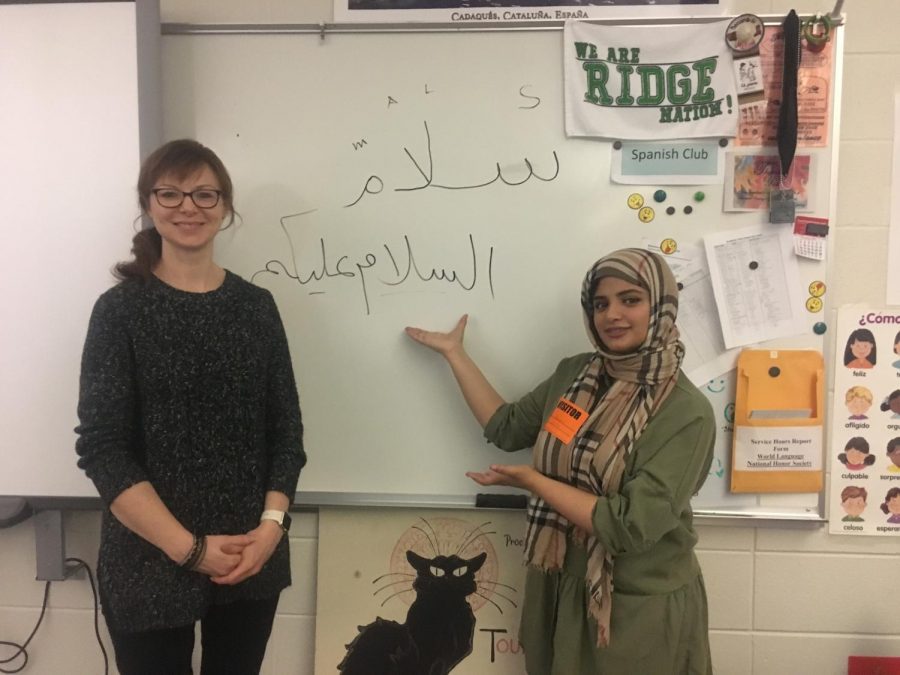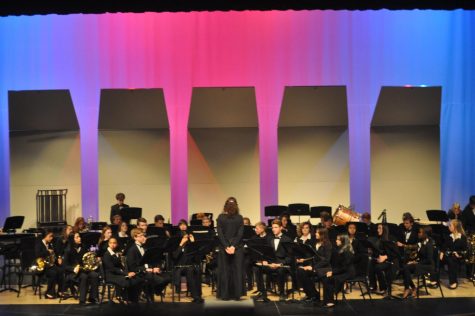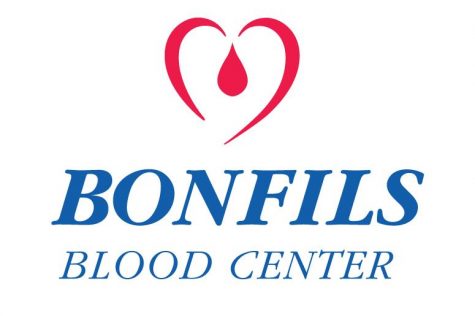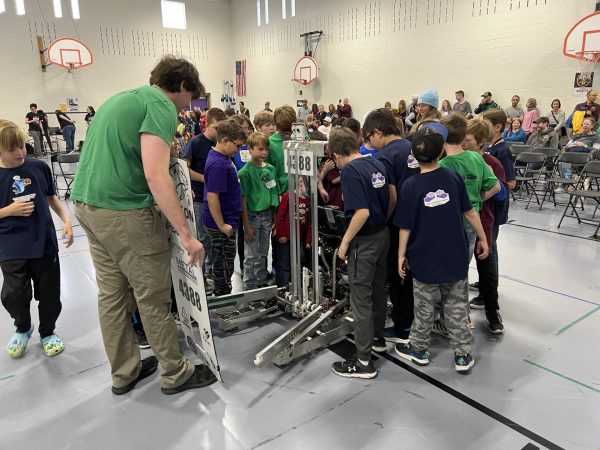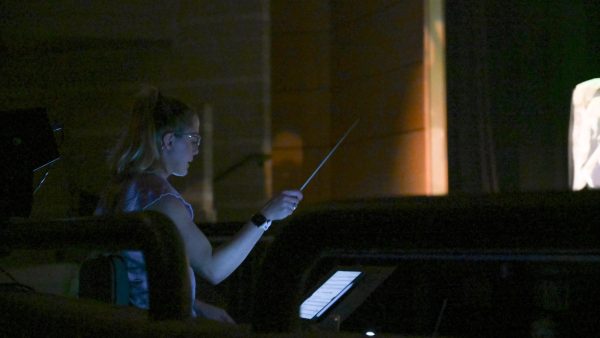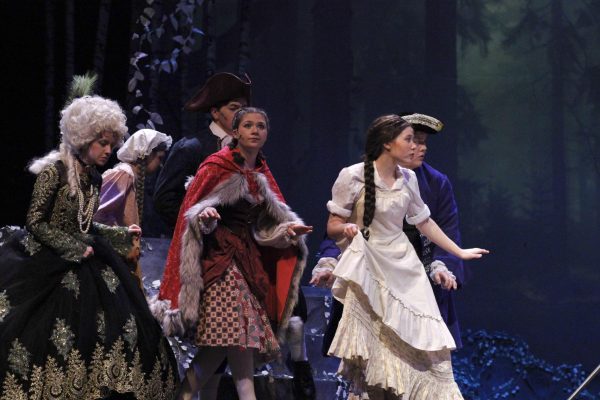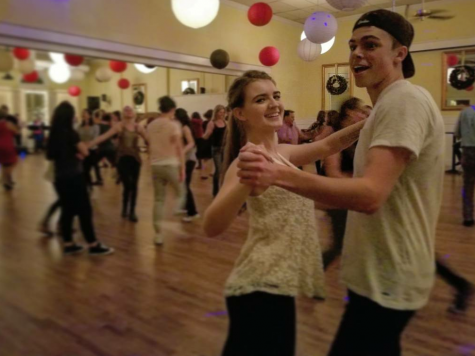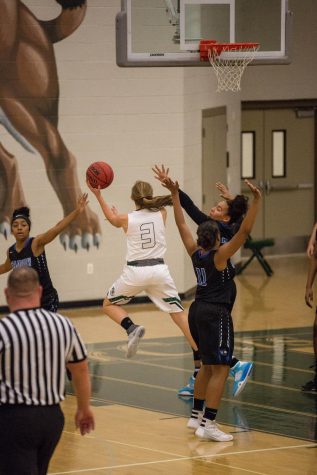Culture Days open student minds
French teacher Sarah Sexton stands with CSU student Hanan Alqarni, who presented about Saudi Arabia during World Culture Days. Photo Credit: Isabella Mahal
For the last nine years, Fossil Ridge High School’s World Language department has facilitated World Culture Days in which students have the opportunity to learn about other countries and regions of the world, as well as travel opportunities available to them. On November 20 and 21, every student at Fossil who is enrolled in Spanish, French, or German got to pick two sessions that interested them from a list of presentations.
This year’s presenters ranged from exchange students at Fossil to teachers, students at Colorado State University (CSU) to parents with experience living in another country. People with connections to 25 individual countries presented, and each class period there was at least one Peace Corps session to educate students about what it’s like to serve in another country. Fossil does their best to reach into the community to find presenters.
Sarah Sexton, head of the World Language department, explained that World Culture Days are prioritized for the purpose of “opening students’ minds to other cultures. We study cultures a lot, obviously, in language classes, but this is a chance to learn about a culture that’s outside the language they’re studying.”
Cole Mason, a junior who studies French, agreed. He said that, “I love learning about life in other countries and how different they are. Every year I’m surprised by something and a stereotype I have is broken.” He believes it’s a very valuable day, adding that, “it’s important to attend every session because it puts the world in perspective and illustrates other countries lifestyles and things we have that we take for granted.”
Here’s some examples at the kind of things students learned about over Culture Days:
Rwanda
A graduate student at CSU from their Global Ambassadors Program (GAP), Chevrine came to the United States just three months ago. She explained the geography and location of Rwanda, which is found in East-Central Africa. The capital, Kigali, is the cleanest city in all of Africa, and the country ranks second safest on the continent. All students wear uniforms to boarding school, and if one cannot afford an education, the government pays to send them to school. 45% of the country’s GDP comes from tourism, especially focused around their large population of gorillas. Kinyarwanda is the first language of most of the population, and is a major source of unity across the country. The country is known most to the rest of the world as being the location of the Rwandan Genocide, which began in 1994 and left one million people dead in three months. However, today’s Rwanda is far different. The president, Paul Kagame, has been in office since 2003. When his two terms came to an end, the people staged a referendum to change the two-term limit in order to keep him in power. Kagame is well loved, and Chevrine was proud to call him a good leader.
When Chevrine opened the time up for questions, students were most curious about the similarities between the United States and Rwanda. They asked about holidays in Rwanda, and learned that the country also celebrates Christmas, as well as their own Independence Day, Women’s Day, and Children’s Day. Many young people in Rwanda love Bruno Mars, Beyonce, and Rihanna. For teenage birthdays, they throw house parties and dance with their friends. Rwanda was the first country in the world to have more women in Parliament than men, and now has 64% female representation. Chevrine stated, “I’m proud to be from there,” and was glad she had the chance to share the truth about her country with others.
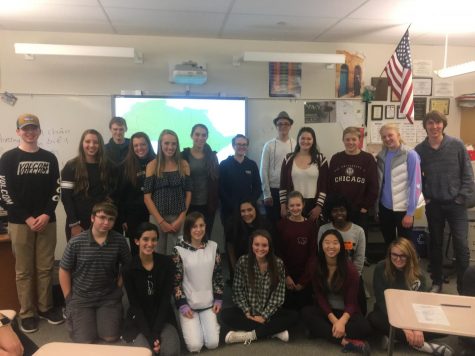
Afghanistan
Haroon Abasy began his presentation by saying, “I remember when I was in high school, I was so tired by the last periods. But this is going to be interesting. Wake up!” He is getting his degree in teaching from CSU, and also began his presentation by explaining where Afghanistan is found. Known as “the Heart of Asia” due to its being surrounded by other large Asian countries, the capital of the country is Kabul. Persian, Farsi, and Pashto are the three most common languages, and Afghanistan is 75% covered by mountains. Skiing and snowboarding are popular, and the seasons are nearly identical to those in Colorado. There is a twelve hour time difference between Fort Collins and Kabul. About three quarters of the population works in an agricultural field, involving the many square miles of forests or the precious wild animals. Birthdays and weddings are celebrated quite similarly to the U.S. Many of the same sports that are popular in the U.S. are also enjoyed in Afghanistan, especially soccer (known as football).
However, the life of a student in Afghanistan is drastically different than that of one here. Many schools don’t have the money for physical buildings, so students study outside in groups with a teacher. Boys and girls are separated in schools, though universities have been desegregated in the last few years. Occasionally, terrorist attacks result in burned schools to prevent students from getting an education. Abasy, though, believes that, “studying makes us knowledge, wise, and gives us the ability to make good decisions.” He explained the differences between common American society and Afghanistan’s primarily Muslim one, in which alcohol and pork are not consumed. Changes are beginning in the country, such as the fact that ten years ago, women would not have driven. Now, thousands apply for licenses every year. Abasy ended his presentation by teaching the students how to say “Shalom”, meaning “peace on you”, which is used to greet someone, and “Tashakur”, meaning thank you.
Your donation will support the student journalists of Fossil Ridge High School. Your contribution will allow us to purchase equipment and cover our annual website hosting costs.

Despite all the warnings given to her, senior Isabella Mahal filled her schedule with AP classes and a single TA period. Many of these classes were only open to seniors and fascinate her, such as AP Literature and AP World History, so not having an off period doesn’t bother her. It isn’t just her...



